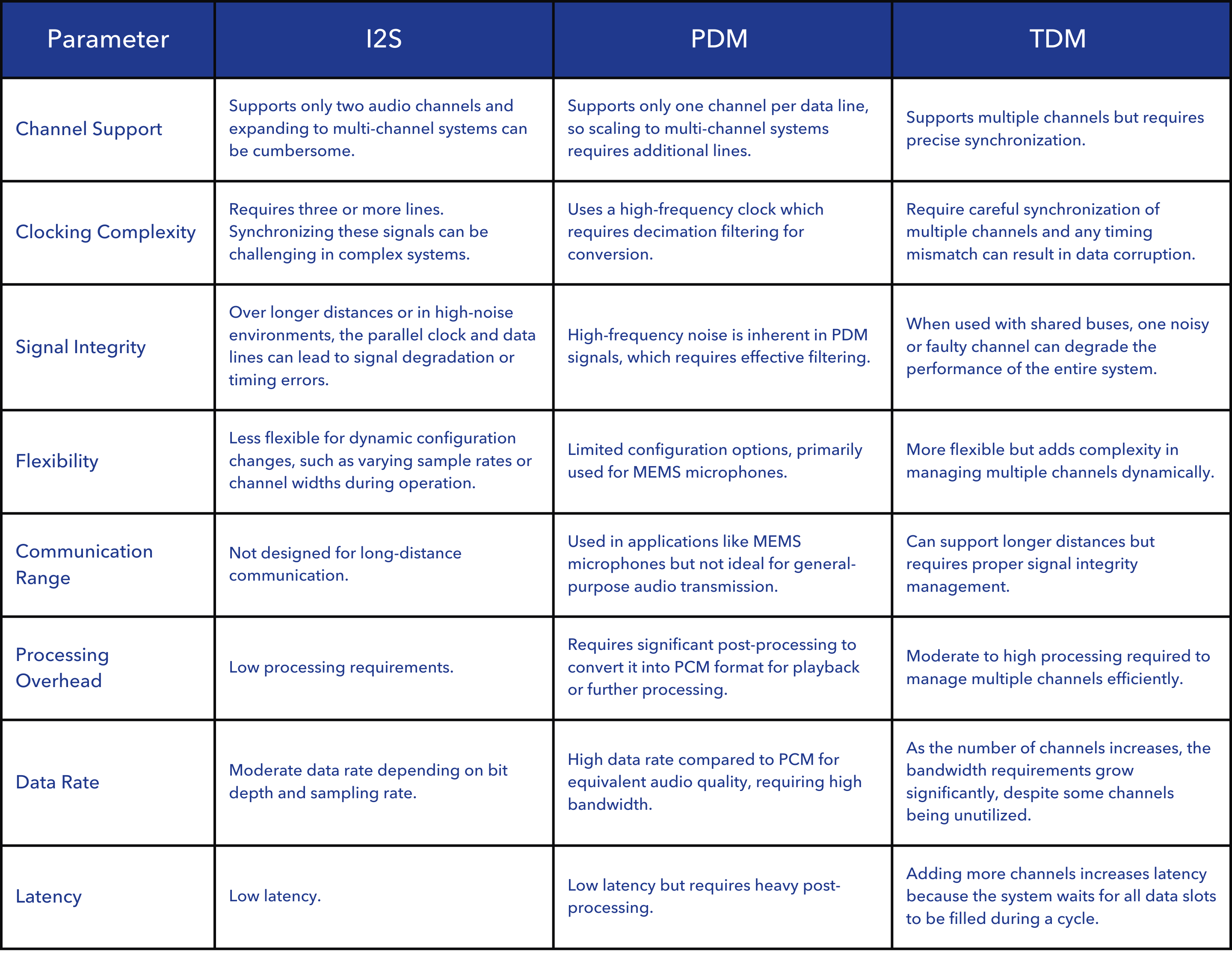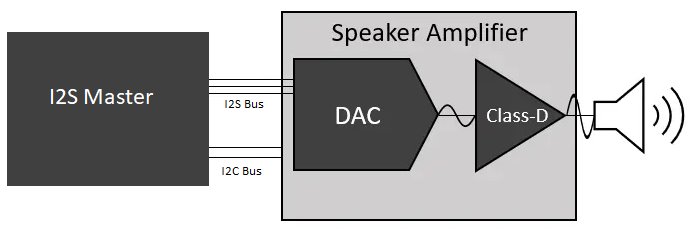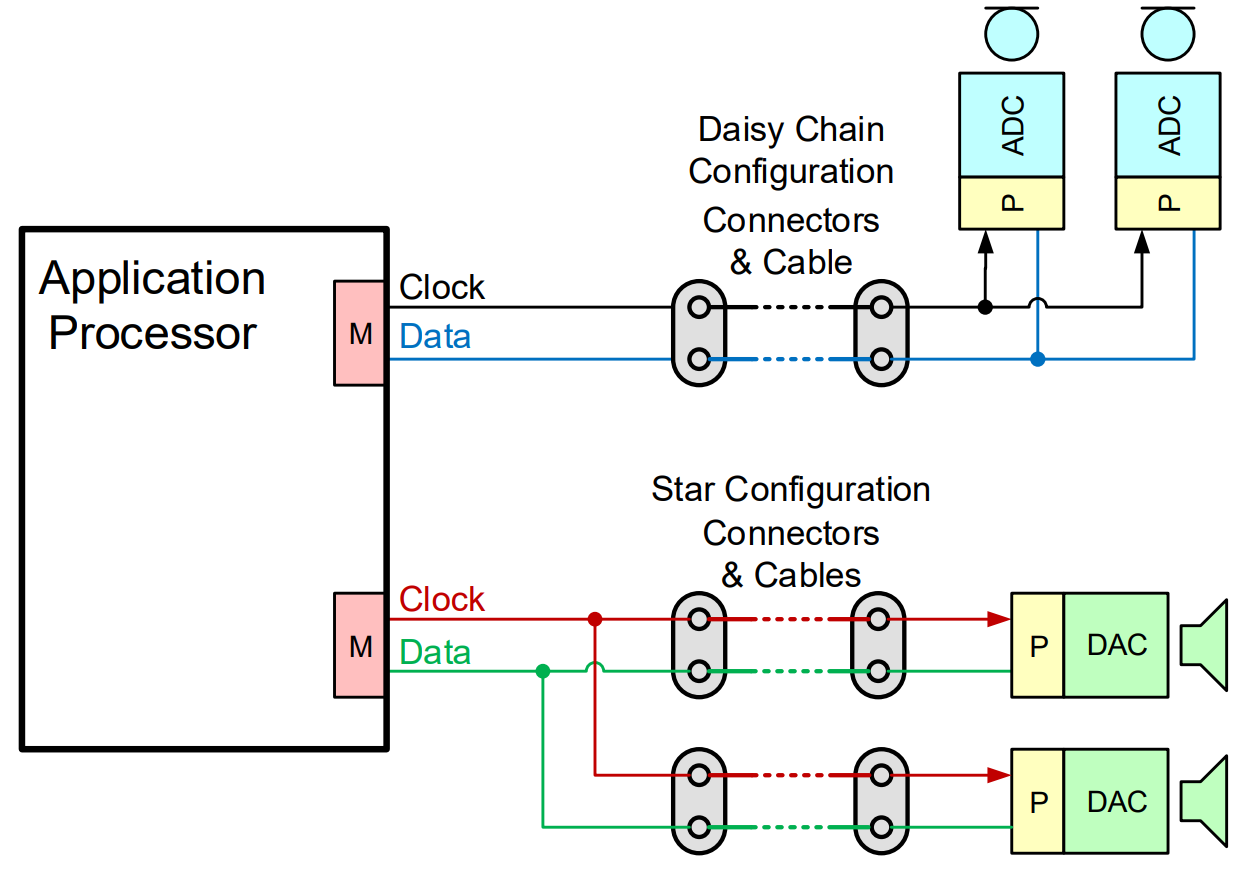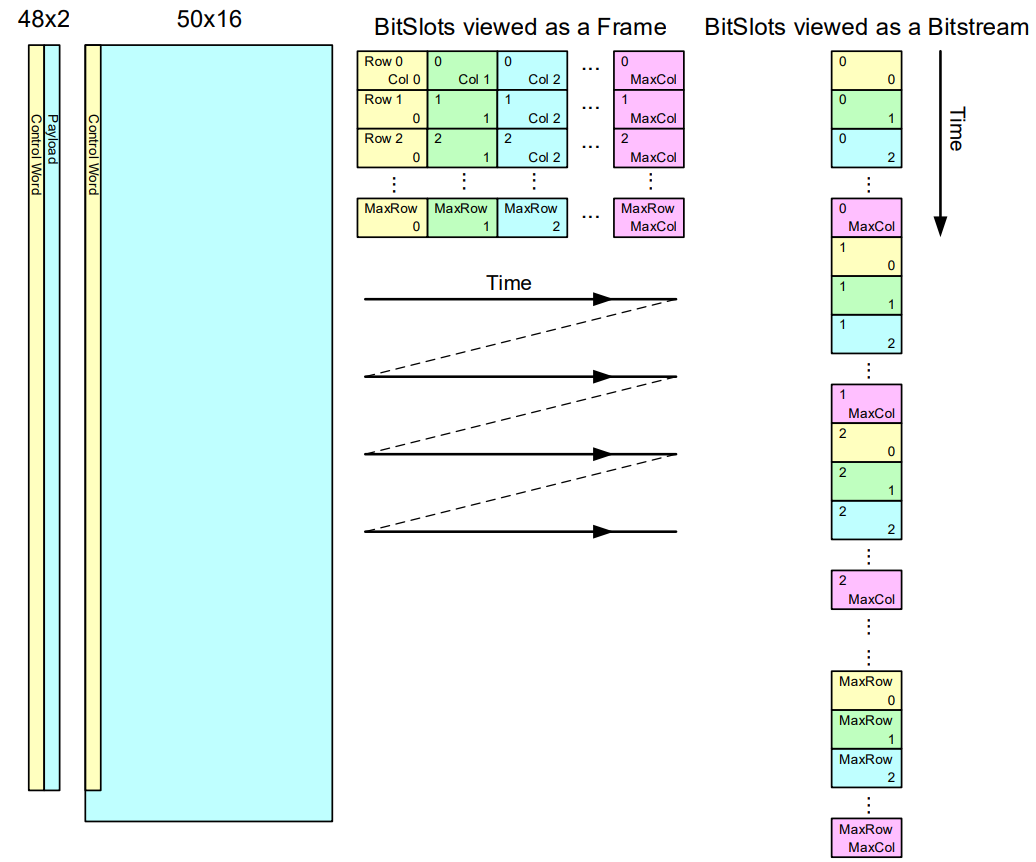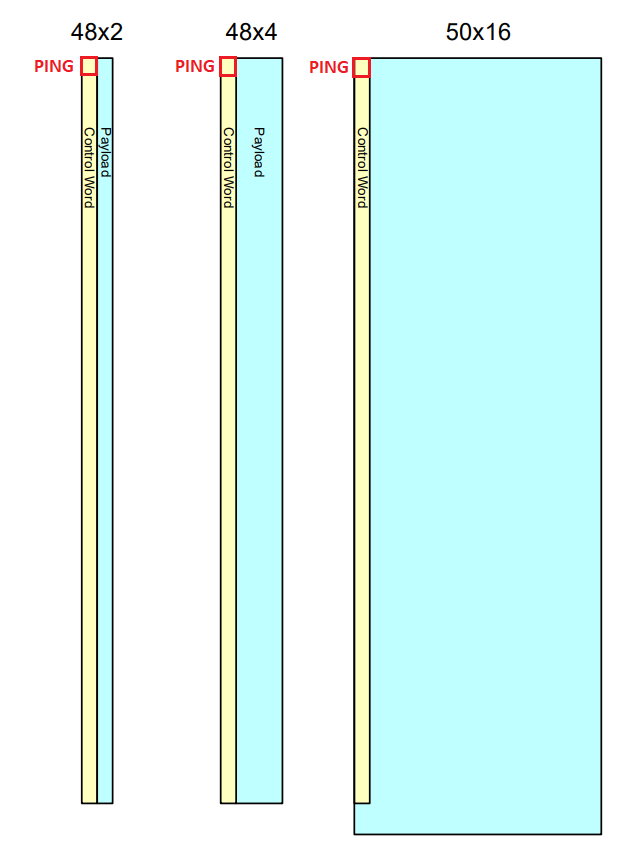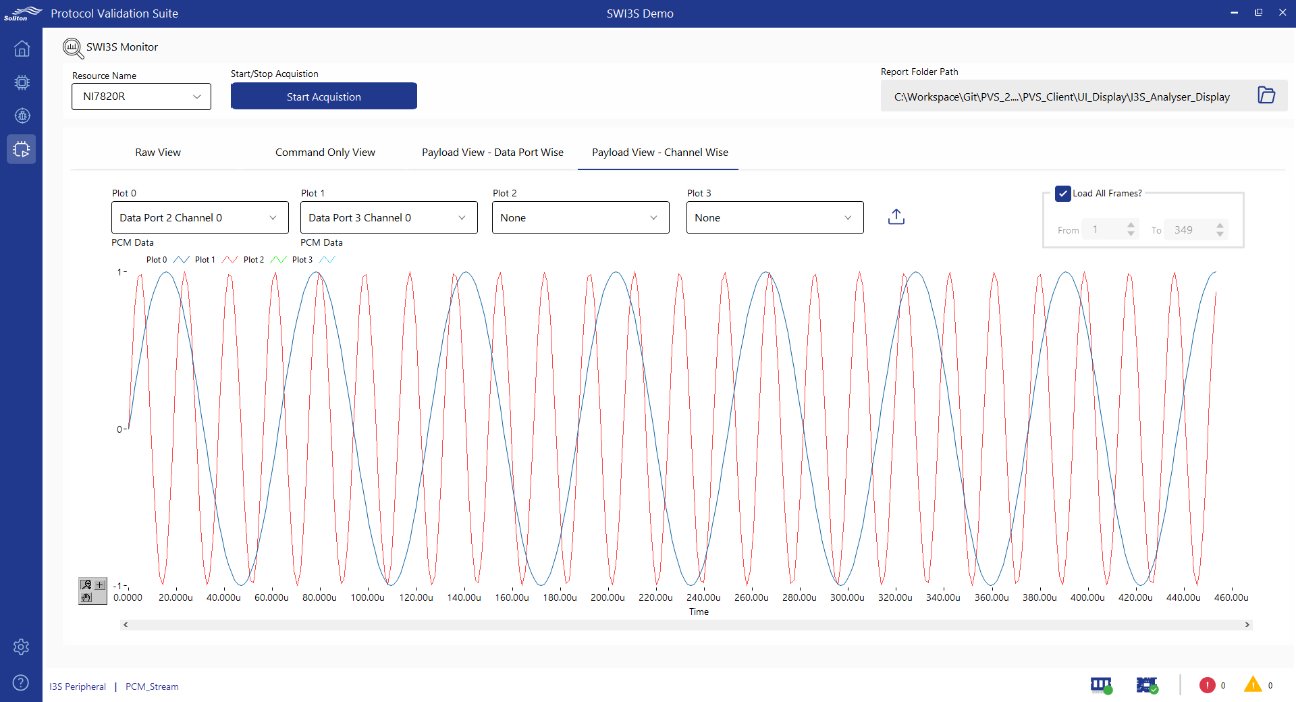A Smarter Approach to Evolving Audio Requirements
But solving modern audio challenges like high-resolution audio streaming and reducing power consumption isn’t just about patching up old protocols. It requires a fundamental shift in how we think about audio transport. Recognizing this need, the MIPI Alliance introduced the SoundWire® protocol to keep pace with the growing demands of audio technology.
At its core, SoundWire unifies audio transport (Data) and control data (Clock) to audio peripherals in the same bus with a unified two-pin interface. This architectural refinement allows developers to create simple, low-cost audio devices and enables the integration of more advanced audio systems.
Let’s take a closer look at what makes SoundWire® revolutionary.
1. Minimalistic Pin Architecture
Traditional audio protocols like I2S and TDM require separate pins for audio transmission and additional pins for control signals. In some cases, three pins for audio and two or more for I2C or SPI control. In contrast, MIPI SoundWire® consolidates audio and control data onto two pins. This streamlined design reduces hardware complexity and enables more compact and cost-efficient audio solutions in space-constrained applications such as wearables, mobile devices, and IoT audio systems.

I2S Pinouts and System Topology

SoundWire Pinouts and System Topology (Image Source Credit : MIPI SoundWire Specification)
2. Flexible Frame Structure
The protocol efficiently handles both isochronous and asynchronous audio streams with a dynamic multiple-payload transport mechanism. This flexibility allows the transport of diverse audio formats, including PCM and PDM, adapting to varying data rates and latency requirements. Unlike rigid transmission protocols, SoundWire® enables command and payload data to coexist within the same serial transmission, optimizing bandwidth utilization and ensuring low-latency communication.

SoundWire Frame Transferring Multi-port Multi-channel Audio Data (Image Source Credit : MIPI SoundWire Specification)
3. Scalability & Dynamic Peripheral Management
Built on a Manager-Peripheral architecture, the system allows up to 11 peripherals to connect dynamically to a single bus with a single Manager. Unlike conventional protocols where audio devices are statically assigned, SoundWire® enables more effortless synchronization to attach seamlessly to the bus. This supports plug-and-play scenarios as newly connected peripherals can be recognized and configured without manual intervention, ensuring greater system flexibility.
4. Increased Data Rate & Low Power Consumption
MIPI SoundWire® utilizes DDR (Double Data Rate) signaling, enabling data transfers on both clock edges. This effectively halves the required clock frequency while maintaining high data throughput, reducing system power consumption by approximately 40% compared to conventional single-edge transmission. The protocol also supports clock scaling and optional multiple data lanes, allowing dynamic adjustment of data rates based on system requirements. To further optimize power efficiency, SoundWire® includes a clock stop mode during idle periods, where peripherals can wake the Manager via in-band signaling, ensuring responsive yet power-efficient operation.
5. Integrated Interrupt & Status Monitoring
Real-time device monitoring is made possible by allowing peripherals to send interrupt-style alerts to the Manager over the same bus line, eliminating the need for extra GPIOs. Continuous status updates are handled using a dedicated PING command frame, which remains active unless a register read or write operation is in progress. Additionally, the first bit of every frame is reserved for interrupts, enabling multiple devices to signal events efficiently.

MIPI SoundWire® First Bit of Each Command used to Check for Interrupt (Image Source Credit : MIPI SoundWire Specification)
These features position MIPI SoundWire® as a transformative technology, enabling high-performance, low-power, and space-efficient audio implementations across a diverse range of applications.
